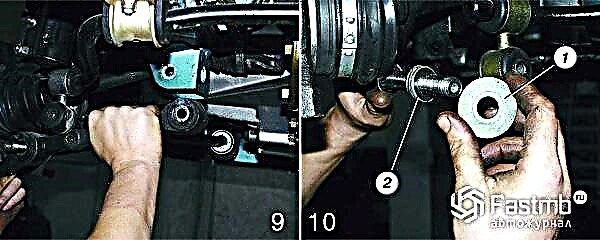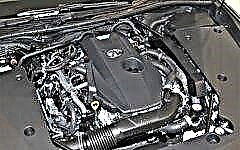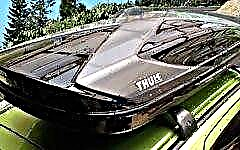

The content of the article:
- Japanese road infrastructure
- Paid and free highways
- Nippon Expressway Company
- Features of road construction in Japan
- Innovation of Japanese road builders
- Development plans and trends
Driving on the highways of Japan, even in densely populated Tokyo, is not a test of the nervous system, but rather a pleasant experience. Those who come to the Land of the Rising Sun are surprised by the absence of traffic jams, the cleanliness, and the flat surface of the roadway.
The creation of road infrastructure is one of the most important and responsible matters in the development of the economy of any country. How are roads built in Japan?
Japanese road infrastructure

Photo: multi-tiered highways in Japan
The car is the main mode of transportation in Japan. It is they who carry out up to 60% of passenger and 52% of freight traffic. The total length of highways in the country is 1.203 million km, including 7.6 thousand km of high-speed highways, 55 thousand km of national highways, 129 thousand km of roads between prefectures. The remaining 1.012 million km of roads are village and city roads.
The highway network connects the main cities of the islands of Kyushu, Shikoku and Honshu; separate road networks exist on the islands of Okinawa and Hokkaido. All of these roads are separate high-speed toll highways, and access to them is regulated.
The length of highways in Japan exceeds the roads of China, Russia, Canada and is second only to the total length of roads in Brazil, India and the United States. If we talk about the density of roads per unit of territory, then here Japan is in first place in the world.
At the same time, the number of cars per capita is second only to that of the United States - on average, there are 1.13 cars per family in Japan.
The first high-speed highway in Japan began to be built in 1954. In 1965, the first expressway in Meixing was commissioned. The length of the route was 190 kilometers. After another 4 years, the Tomei track was commissioned. In 1981, 2,880 km of expressways were already functioning in the country.
Paid and free highways

Photo: expressways of Japan
All expressways in Japan are toll roads. The price for using such a highway is the highest in the world. The cost depends on the length of the track.
On average, you will have to pay $ 22 in Japan to travel 100 kilometers on a toll road. This is an order of magnitude higher than the cost of toll roads in neighboring China ($ 10) and distant Great Britain ($ 12).
For residents of the United States, who are accustomed to the average price of a toll highway of $ 3 per 100 km of track, Japanese prices will seem outrageous at all. But, nevertheless, Japanese toll highways exist, flourish and are being built.
However, this does not mean that Japanese drivers do not have a choice - next to the toll highway there is a regular highway, along which, as a rule, public transport moves.
Free roads are always toll roads, there are many traffic lights that regulate traffic. A free road has only one lane in each direction, and toll roads, as a rule, are built with two and three lanes in each direction.
And naturally, the state and level of service at gas stations, service stations, motels and roadside cafes on toll roads is significantly higher than at free ones.
Nippon Expressway Company

In order to carry out the construction of new highways and maintain the condition of the roads already built, three corporations for the construction of highways Nippon Expressway Company were created in Japan - NEXCO (Japanese road companies):
- Central (C-NEXCO);
- Eastern (E-NEXCO);
- Western (W-NEXCO).
The corporations are respectively responsible for the central, eastern and western Japanese islands.
These corporations operate under the auspices of the state. Initially, NEXCO was financed by large financial investments from post offices.
The funds were formed on the basis of the contributions of many people. Thus, we can say that the roads in Japan were built largely not at the expense of the state, but at the expense of citizens' contributions.
Features of road construction in Japan
Planning phase

Photo: roads in Tokyo
The first step in building any road is planning. In Japan, this stage is traditionally taken very seriously. Many representatives of various professions are involved in the work. First of all, it is determined:
- what type of road is required in the given specific conditions;
- what kind of traffic it will have;
- what are the features of the terrain and how they will affect the construction and further operation of the road.
Particularly complex highway planning can take months or even years. The need for junctions, overpasses, bridges is taken into account.
Environmentalists and economists are necessarily involved in the planning process: the former determine how the road will affect the environment, the latter assess the cost of construction, which materials will be preferable to use.
When the preliminary construction phase is completed, construction experts and surveyors create detailed plans and drawings. At this stage, the public is necessarily involved.
Any citizen of the country has the right to ask his questions about the upcoming construction, to express his opinion on the future road. As a rule, all comments and suggestions are necessarily considered by the planning team.
Moreover, project developers will be obliged to request estimates and proposals from local state or federal structures to make sure that the road is built with the maximum consideration of their wishes.
In the event that the land plot, which appears in the construction plan, belongs to a private person, it will be necessary to negotiate and redeem the plot to build a road on it.
In Japan, as in the United States, there is a tendency to plan ahead and buy out such plots from private owners. This significantly speeds up the planning and construction process in comparison, for example, with the Russian Federation, where the issues of buying out land plots for roads are limited by price gouging by owners and the absence of a planned purchase by the state of the territory for the construction of roads.
Excavation

After the planning phase has been completed and a contractor has been selected, earthworks begin. It is necessary to create a solid foundation for the road, otherwise it will not last long.
A level surface is created, gravel layers are added and compacted.
At the same stage, drainage systems and storm sewer systems are created. All Japanese roads have a slope that allows water to roll off and not leave puddles on the road surface. Therefore, there is practically no dirt and water on Japanese roads, even after heavy rainfall.
Concrete pavement

As you know, modern roads are built either from asphalt or concrete. The Japanese took the technology common in the United States as the basis for their roads - concrete is the main road surface in Japan.
Unlike asphalt pavement, concrete is more expensive, but at the same time it lasts much longer, therefore, as a result, concrete highways are more profitable than asphalt ones.
On the other hand, it is concrete that allows Japanese road builders to create multi-level complex interchanges, which have long become the "calling card" of the Japanese metropolis.
During construction, a mixture of sand and gravel is used, which is held together with cement.Liquid concrete is poured into steel molds placed on the road. Using a road vibrator, the mixture is "shaken out" so that it settles evenly without leaving internal voids.
This technology improves the strength of the road surface. Well-laid concrete lasts for decades, while an asphalt road needs to be repaired every few years.
Cracks in concrete are dealt with by making cuts-joints between concrete slabs. In the presence of cuts, the slab can shrink and expand under the influence of temperature extremes without risk of destruction.
Innovation of Japanese road builders
Heated roads

In the photo: a sprinkler of thermal water in the center of the roadway
Japan has traditionally been ahead of the rest of the world in innovation and technological revolution. Road construction is no exception.
Japanese engineers have long realized that it is more difficult to remove snow from roads than just to prevent it from appearing. The climate in some of the islands of Japan is quite severe, in the same Hokkaido the average annual temperature is only 8 degrees Celsius.
But snowfalls and glaciers do not threaten Japanese roads - for a long time in all cities of the country where it snows, all roads and sidewalks are equipped with a heating system.
This innovation successfully combats both glaciation and snow falling on the road. Thus, the risk of accidents is significantly reduced, the movement is safer.
In the middle of the road, as a rule, a concrete strip is laid, in which sprinklers of hot water from thermal springs are mounted. The intervals between the sprinklers are quite small, the jets of water have time to heat the surface and melt the snow on it.
The spraying intensity is regulated, the condition of the devices is regularly checked by special services. In areas where there are no sprinklers, pipes with the same thermal water are laid under the road, which perform the same function.
Singing roads

Another interesting feature of the Japanese road infrastructure is the presence of the so-called "singing roads".
The Singing Road is an area where a passing car generates a vibration that is transmitted as a melody. The effect is achieved by applying parallel stripes up to 24 mm wide and 6 mm deep on the road.
It is noteworthy that such sections will “play” the “desired melody” only if the driver is moving along the road at the required speed. As a rule, the speed limit on the "singing road" is 50 km / h. Thus, the road helps to control the speed of the movement.
On the other hand, the sound of the road does not allow the driver to fall asleep while driving - this is another benefit from the introduction of such, at first glance, an exotic design of the roadway.
The first "singing road" appeared in 1995 in Denmark, but Japan, in its usual manner, has long since taken the lead in introducing this interesting innovation.
Development plans and trends

New roads are constantly being built in Japan. Since road transport is the main one on the islands, a lot of money is invested in these roads.
Currently, the construction of the second bypass highway in Tokyo is ongoing, a high-speed highway is being laid along the coast of the Sea of Japan between Tottori and Matsue prefectures. The builders focus on the creation of high-speed highways.
However, this does not mean that small mountain villages remain at the mercy of off-road - there are roads in Japan almost everywhere where people live, and they live on these islands very densely, there is not enough territory. But even a shortage of territory is not an obstacle to the construction of new roads, because they are the guarantee and basis of the country's successful economy.
Conclusion
The result of a planned and careful approach to road construction in Japan has naturally become a network of roads, which is pleasant and comfortable to travel along.
Even in megacities, there are almost no traffic jams here. - only light braking is required on the most congested sections of the track.
The traffic situation on Japanese highways once again testifies to the fact that competent planning and an accurate approach to the implementation of all stages of work are the key to high quality and long service life of the road.











